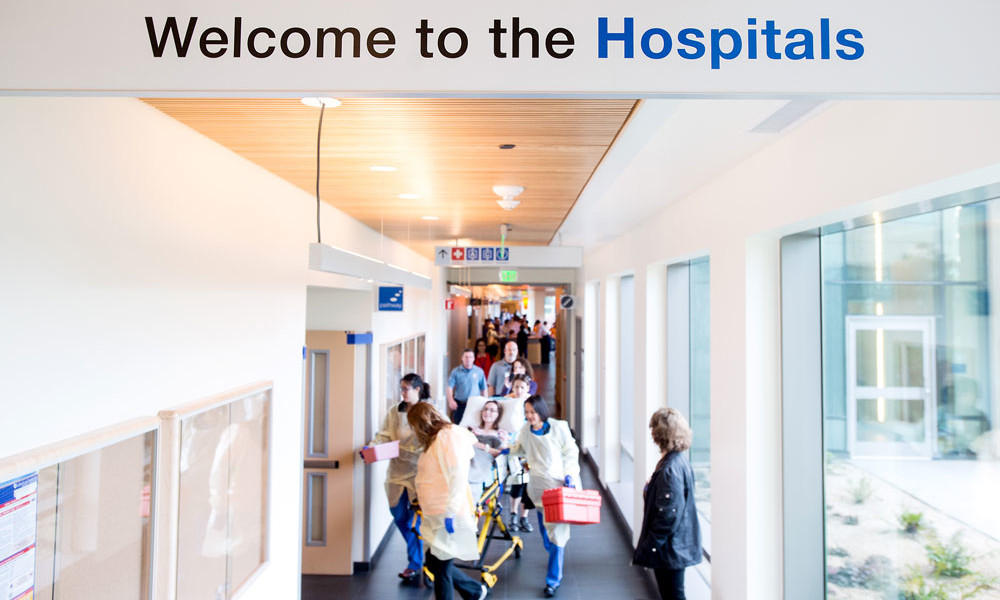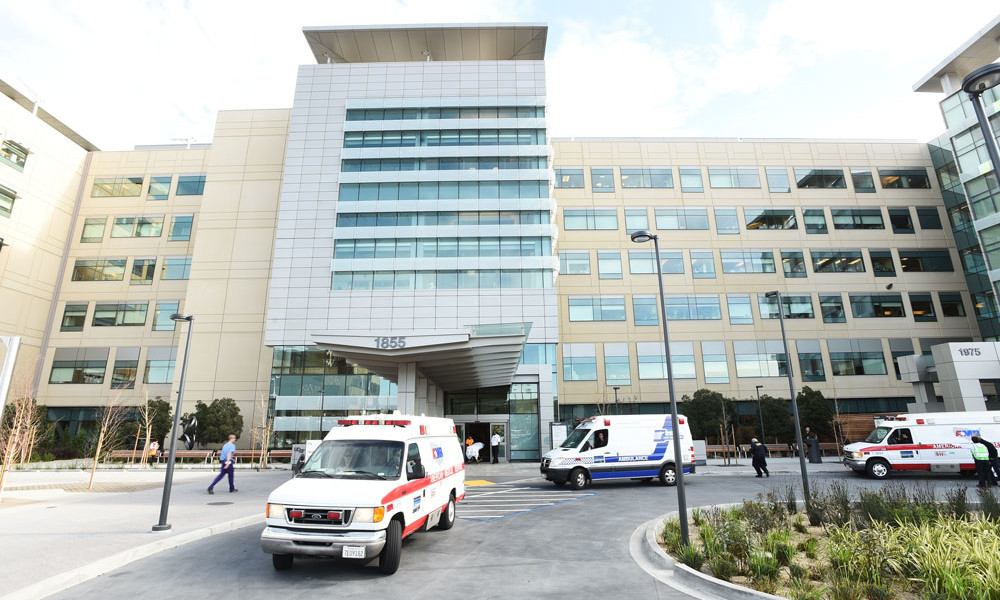Subscribe Now
UCSF Medical Center at Mission Bay Opens, Welcomes 131 Patients
With 40 ambulances, approximately 300 UC San Francisco staff and faculty, as well as 100 emergency medical services personnel, UCSF Medical Center recently transported 131 patients to the new UCSF Medical Center at Mission Bay from its Parnassus and Mount Zion campuses in California.
The opening of the new hospitals was the culmination of more than 10 years of planning and construction of the complex, which includes UCSF Benioff Children’s Hospital San Francisco, UCSF Betty Irene Moore Women’s Hospital, UCSF Bakar Cancer Hospital and the UCSF Ron Conway Family Gateway Medical Building.
The move day, itself, reflected significant planning. “Patient safety was our top priority during the patient move, along with minimizing disruption to our neighbors. We achieved both goals, thanks to the superb work of our medical center faculty and staff, as well as our partners in the city of San Francisco,” said Mark R. Laret, CEO of UCSF Medical Center and UCSF Benioff Children’s Hospitals. “We have been looking forward to this day for some time, and the opportunity to start providing care in our new location at UCSF Mission Bay.”
The majority of patients who made the trip to the new facility were children, as UCSF Benioff Children’s Hospital San Francisco moved from Parnassus to its new home at UCSF Mission Bay.
Strategically located on UCSF’s Mission Bay biomedical research campus, the new medical center puts UCSF physicians in close proximity to UCSF researchers and nearby biotechnology and pharmaceutical companies in Mission Bay and beyond who are working to understand and treat diseases ranging from cancer to cardiovascular disease to neurological conditions.
“Significantly, the move also frees up space on our Parnassus and Mount Zion campuses, which will allow us to enrich our medical programs for adult patients there. With the opening of the hospitals at Mission Bay, we now have integrated clinical care and research programs on all of our campuses, the critical factor that has contributed to UCSF’s local, regional and global impact.”
The UCSF Parnassus campus will be restructured to provide more specialized clinical services, such as transplants, and the UCSF Mount Zion campus will become a world-class hub for outpatient care.
“UCSF Medical Center’s new $1.5-billion, state-of-the-art campus in our city’s Mission Bay neighborhood will help improve the health of children, women and cancer patients,” said San Francisco Mayor Ed Lee. “This is not just a milestone for UCSF; this is a milestone for our city and our city’s healthcare industry, which is at the heart of our economy providing good jobs for our residents.”
The UCSF Medical Center at Mission Bay is an integrated hospital complex that includes:
- 183-bed UCSF Benioff Children’s Hospital at Mission Bay with an urgent care/emergency department, pediatric primary care and specialty outpatient care.
- UCSF Women’s Specialty Hospital with 36 beds, cancer care, specialty surgery and birth center.
- UCSF Cancer Hospital at Mission Bay, part of the Helen Diller Family Comprehensive Cancer Center, which houses 70 beds and offers inpatient and outpatient surgery for cancer specialties.
- 207,400-square-foot outpatient building.
- 36,000-square-foot energy center, helipad, parking and support services.
As the general contractor, DPR Construction worked with UCSF, Anshen + Allen–part of Stantec Architecture, Cambridge CM and 17 subcontractors at the Integrated Center for Design and Construction to deliver the ground-up, 878,000-square-foot hospital complex.
The facility has been awarded LEED Gold accreditation, one of the first hospitals in California to achieve this honor. The medical center also includes 4.3 acres of green space, including 1 acre of rooftop gardens. A smart irrigation system that automatically adjusts water output according to weather fluctuations, and other water conservation innovations, are expected to save 4 million gallons of potable water a year. Designed with non-toxic materials, the hospital complex will use 50 percent less power than the average U.S. hospital.
Photos courtesy of Noah Berger.
Tags: Construction, LEED, Sustainability
Posted February 17, 2015
More Articles:
- CxA Workshop & Exam
Apr 29, 2024 – Apr 30, 2024 - EMP Seminar & Exam at CxEnergy 2024
Apr 29, 2024 – Apr 30, 2024 - CxEnergy
Apr 29, 2024 – May 2, 2024 - PHCC West 2024
Apr 29, 2024 – May 2, 2024 - Lean in Design Forum 2024
May 1, 2024 – May 2, 2024 - IFMA’s Facility Fusion Conference & Expo
May 5, 2024 – May 7, 2024 - ASHE Academy 2024
May 6, 2024 – May 10, 2024












